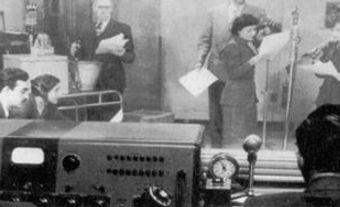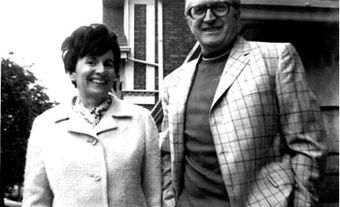Little Theatre Movement
Little Theatre Movement or la petite scène has now become a generic term for the amateur or nonprofessional "community" theatre in Canada. Originally, however, it referred to an international reform movement protesting against the crass, mass-produced, professional fare seen around the turn of the century. Inspired by late-19th-century European art troupes such as André Antoine's Théâtre Libre in Paris, and W. B. Yeats's and Lady Gregory's early 20th century Abbey Theatre in Dublin, the movement spread to North America prior to WWI.
With the rising popularity of films and radio that followed in the 1920s, commercial touring declined and literally hundreds of grassroots community theatres blossomed across Canada to fill the vacuum. Toronto's Hart House Theatre (1919-) became the flagship and its first director, Roy Mitchell, the spokesperson for an art theatre in Canada. His analytical treatise Creative Theatre (1929; rpt 1969) remains a prophetic expression of the movement's ideals.
Some of the finest Canadian organizations were the Vancouver Little Theatre (1921-); Carroll Aikins's short-lived Home Theatre near Naramata, BC (1920-24); Toronto's University Alumnae (1918-); the Cercle Molière in St-Boniface (1925-); the Ottawa Little Theatre (1913-); the Montréal Repertory Theatre (1930-61); Father Legault's Compagnons de Saint-Laurent (1937-52); and the Halifax Theatre Arts Guild (1931-).
In October 1932 the DOMINION DRAMA FESTIVAL (DDF) was organized and its annual week-long competition became the focus and raison d'ètre for the Little Theatre movement. Until at least 1950, the DDF was Canada's national theatre expression bringing together French and English, and uniting devotees from coast to coast. But gradually the Depression years and the spirit of competitiveness defeated the Little Theatre as an art movement. The early experimentation gave way to established classics, or increasingly trivial and sentimental plays reflecting the waning colonial ties of Empire, whether British, French or American, and the kind of material the movement initially protested against.
Perhaps only with director-playwright Herman VOADEN's "symphonic expressionism" and the left-wing Theatre of Action (1935-40), both in Toronto, did the Little Theatre chart some new directions. Ironically, their productions were not appreciated in the context of the DDF. The national festival shut down during WWII and then, in the decades following, jostled with the emerging professional theatre that eventually supplanted it. Only a small number of groups: Workshop 14 in Calgary, the Winnipeg Little Theatre, the London Little Theatre and the Montréal Repertory Theatre, made the difficult transition to professional status.
With the demise of the DDF in 1978, the remnants of the Little Theatre movement retreated to the big-city suburbs or smaller communities where they continue to flourish in great numbers, often evincing noticeably London, Parisien or multicultural accents. Little Theatres still serve an important training role and fill an avocational need. Without them and the DDF umbrella, Canada's indigenous theatre would not have bridged the 2 wars. Being amateur, they were able to exist unsubsidized through the decade of economic collapse. They produced a generation of theatre practitioners, many of whom became postwar professionals, and their idealism sowed the seeds of a national theatre in Canada.
See also DOMINION DRAMA FESTIVAL; THEATRE, ENGLISH-LANGUAGE; THEATRE, FRENCH-LANGUAGE; THEATRE, MULTICULTURAL; STAGE AND COSTUME DESIGN.

 Share on Facebook
Share on Facebook Share on X
Share on X Share by Email
Share by Email Share on Google Classroom
Share on Google Classroom


